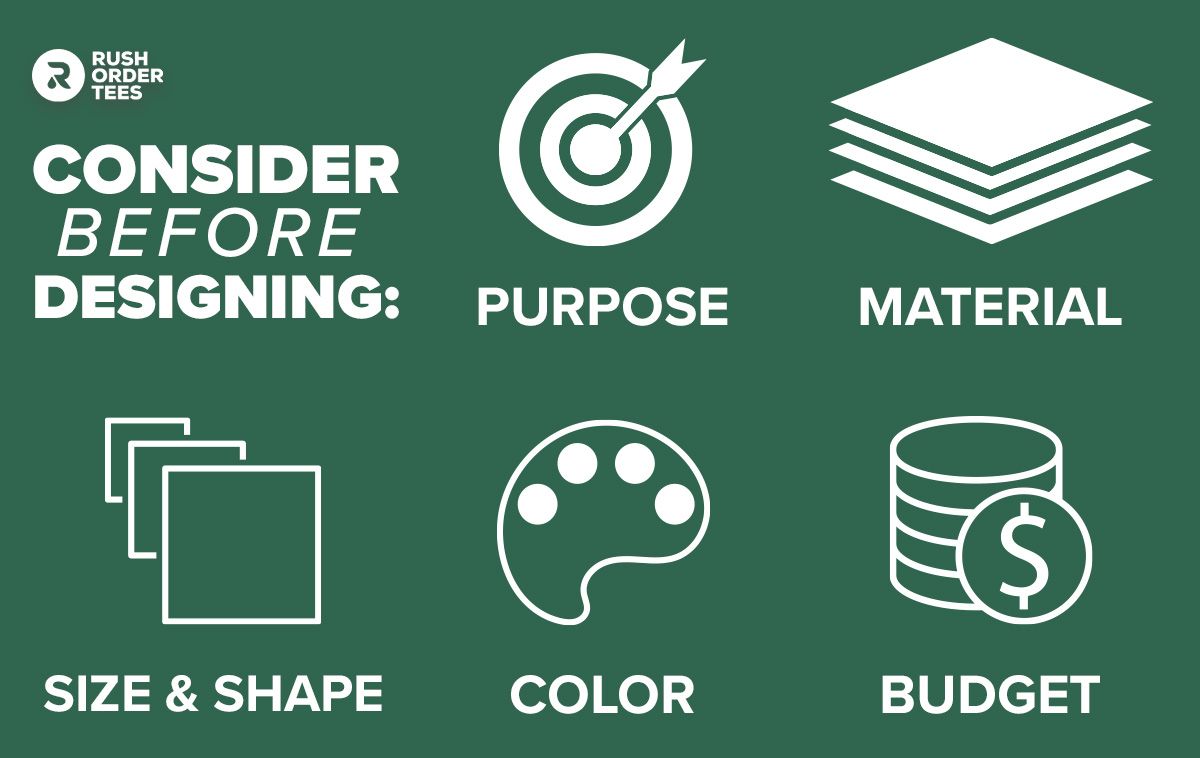
Custom tote bags have become a staple in both fashion and marketing, offering a unique blend of functionality and style. Whether you're a business looking to promote your brand or an individual wanting to express your personality, this type of promotional product is the perfect canvas. Tote bags are incredibly versatile and offer an eco-friendly appeal, making them popular across various demographics. But what exactly are custom tote bags, and why are they so popular?
Custom tote bags are made from durable materials like cotton, canvas, or jute. They come in a wide variety of shapes and sizes, allowing for endless design possibilities. These bags are not just practical for carrying items but also serve as a walking advertisement for brands. Their popularity has surged as more businesses and individuals embrace sustainable practices and seek creative ways to stand out.
If you’re sold on custom tote bags but need some inspiration on how to design them and what considerations you should take into account before placing your order, then you’re in the right place. In this article, we’re breaking down everything you need to know when it comes to designing custom tote bags. Let’s dive in.
Different Types Of Tote Bags
When it comes to choosing the right tote bag for your custom design, understanding the different types available is essential.
There are three main types of tote bag materials: canvas, jute, and cotton. Each has its own benefits, from durability to customization options.
Here are some of our most popular products on our site that feature a range of these materials:
There are also a wide selection of different features that you can choose from when choosing the right tote bag for your needs.

Closure Type: The closure type can vary depending on the bag you select. Some totes will not have any specific closure, while others have zippers, hook and loop, drawstrings, and push-on.
Pockets: Not all tote bag types will have pockets, so if this is a requirement, make sure to double-check the product description.
Waterproofing: The level of waterproofing will depend on the material you choose and whether or not it has been pre-treated.
Foldable: Not all tote bag materials are foldable, and this will vary depending on structure of the bag.
Laptop Compartment: A nice feature for office workers or for giveaways at trade shows is tote bags with a laptop compartment for safekeeping.
Water Bottle Pocket: Another great feature is a secure pocket for water bottles to keep them upright to prevent leakage.
For a more detailed look into the various types of tote bags and their specific uses, check out this comprehensive guide to tote bags.
Benefits of Designing Your Own Tote Bag
Designing your own tote bag offers a wide range of benefits, whether you're a business or an individual. Here are some key advantages:
Cost-effective marketing tool: For businesses, custom tote bags are an affordable way to promote your brand. They serve as walking billboards, giving your brand exposure wherever the bag is carried.
Eco-friendly and sustainable: Custom tote bags, especially those made from materials like cotton or jute, are reusable and reduce the need for single-use plastics. This not only helps the environment but also aligns your brand with sustainable practices.
Personalized fashion statement: For individuals, designing your own tote bag allows you to express your personality or convey a message. Whether it's a favorite quote, a unique design, or your own artwork, custom tote bags let you carry your creativity wherever you go.
Key Considerations Before Designing

Before diving into the design process, several important factors must be considered, including purpose, material, size, shape, color, and budget.
Purpose of Your Tote Bag
What will your tote bag be used for? Is it for daily shopping, a promotional giveaway, or a special event? Understanding the purpose will help guide your design decisions, from the material to the size and style.
Choosing the Right Material
The material of your tote bag will affect its durability, appearance, and environmental impact. Here are some common options:
Cotton
Soft and lightweight, cotton is a popular choice for its natural and biodegradable properties. It's perfect for casual, everyday totes.
Canvas
A heavier fabric than cotton, canvas offers increased durability and can hold heavier items. It's a great choice for multi-purpose bags that need to withstand wear and tear.
Jute
Known for its rugged texture and eco-friendly nature, jute is a sustainable option that adds a rustic charm to your tote bag. It's ideal for eco-conscious brands or those wanting to make a bold environmental statement. Check out this detailed post on jute vs. canvas tote bags for a deeper comparison.
Size and Shape Matters
The size and shape of your tote bag should be chosen based on its intended use. Smaller bags are great for casual outings, while larger ones are suitable for shopping or carrying work essentials. Additionally, consider the shape—rectangular for books and documents, square for groceries, or something more unique for a stylish touch. Think about what your audience is most likely to use them for.
Selecting the Perfect Color Scheme
Your color choice can make or break your design. Think about your brand's colors or personal preferences. Are you going for something bold and eye-catching or more muted and sophisticated? Consider how the colors will complement your design and the bag's material.
Determining Your Budget
Finally, it's important to set a budget before starting the design process. Custom tote bags can range from affordable to premium, depending on the materials, printing techniques, and quantities ordered. Having a clear budget will help you make informed decisions and avoid overspending.
Steps to Design a Custom Tote Bag
Now that you've considered the essentials, it's time to dive into the design process. Here are the key steps:
Step 1: Brainstorming Ideas and Inspirations Start by gathering ideas and inspiration. Look at existing tote bag designs, think about your brand or personal style, and consider what message or aesthetic you want to convey. Consider the color and fonts of your existing brand messaging and logo, and how you want that to display on a tote bag.
Step 2: Creating a Design Concept Once you have your ideas, it's time to develop a concept. This is where you'll decide on the key elements of your design, such as logos, text, images, and color schemes. Make sure your concept is cohesive and aligns with the purpose of the tote bag.
Step 3: Choosing Printing Techniques The next step is selecting the best printing technique for your design. The method you choose will depend on factors like the material of the tote bag, the complexity of the design, and your budget. Here are some common options:
- Screen Printing - Screen printing is a popular choice for custom tote bags, especially for designs with solid colors. It's cost-effective for larger quantities and produces vibrant, long-lasting prints.
- Heat Transfer Printing - Heat transfer printing involves applying a design to the tote bag using heat and pressure. This technique is ideal for designs with multiple colors or intricate details, offering a smooth and precise finish.
- Embroidery - Embroidery is the way to go for a more premium and textured look. This method stitches your design onto the tote bag, making it durable and elegant. It's perfect for adding a touch of sophistication to your custom tote.
Popular Design Ideas for Custom Tote Bags
Stuck for ideas? Here are some popular design concepts that are sure to inspire:
- Brand Logos: Keep it simple and effective with your brand's logo. It's a timeless choice that ensures your brand is front and center.
- Minimalist Designs: Sometimes, less is more. Minimalist designs with clean lines and simple graphics can create a sophisticated look.
- Bold and Bright Graphics: Want to make a statement? Go for bold colors and large graphics that catch the eye and convey energy.
- Custom Illustrations: If you have artistic skills or can commission an artist, custom illustrations can make your tote bag truly one-of-a-kind.
How to Ensure High-Quality Printing
To make sure your tote bag turns out exactly as you envisioned, follow these tips:
Selecting High-Resolution Images - Ensure that any images or logos you use are high-resolution. This prevents pixelation and ensures your design is sharp and clear.
Understanding Print Placement - Consider where your design will be placed on the tote bag. Centered logos, all-over prints, or designs that wrap around the bag can create different effects. Think about how the bag will be carried and how the design will look from different angles.
Conclusion
Designing a custom tote bag is an exciting process that allows you to create something unique and functional. From choosing the right materials to selecting the perfect printing technique, every step is an opportunity to showcase your creativity. Whether you're designing for business or personal use, custom tote bags offer a blend of practicality and style that’s hard to beat. So why wait? Start brainstorming your design today and bring your vision to life!
FAQs
How long does it take to design and produce a custom tote bag?
The timeline can vary depending on the complexity of the design and the printing method, but generally, it can take anywhere from a few days to a few weeks.
What is the best material for a durable tote bag?
Canvas is often considered the best material for a durable tote bag due to its strength and ability to withstand heavy loads.
Can I order custom tote bags in bulk?
Yes, most custom tote bag suppliers offer bulk ordering options, which can be more cost-effective for businesses or events.
How do I choose the right printing method for my design?
Consider the complexity of your design, the material of the tote bag, and your budget. Screen printing is great for simple designs, while heat transfer is ideal for more detailed work. Embroidery is best for a premium feel.
Are custom tote bags environmentally friendly?
Yes, especially when made from materials like cotton, canvas, or jute. These materials are reusable and reduce the need for single-use plastic bags.

Sophie Brannon
About the Author
Sophie is the Director of SEO for RushOrderTees. She is a travel enthusiast, passionate sports fan, and rock music aficionado. She owns more black tees than there are days of the week.

